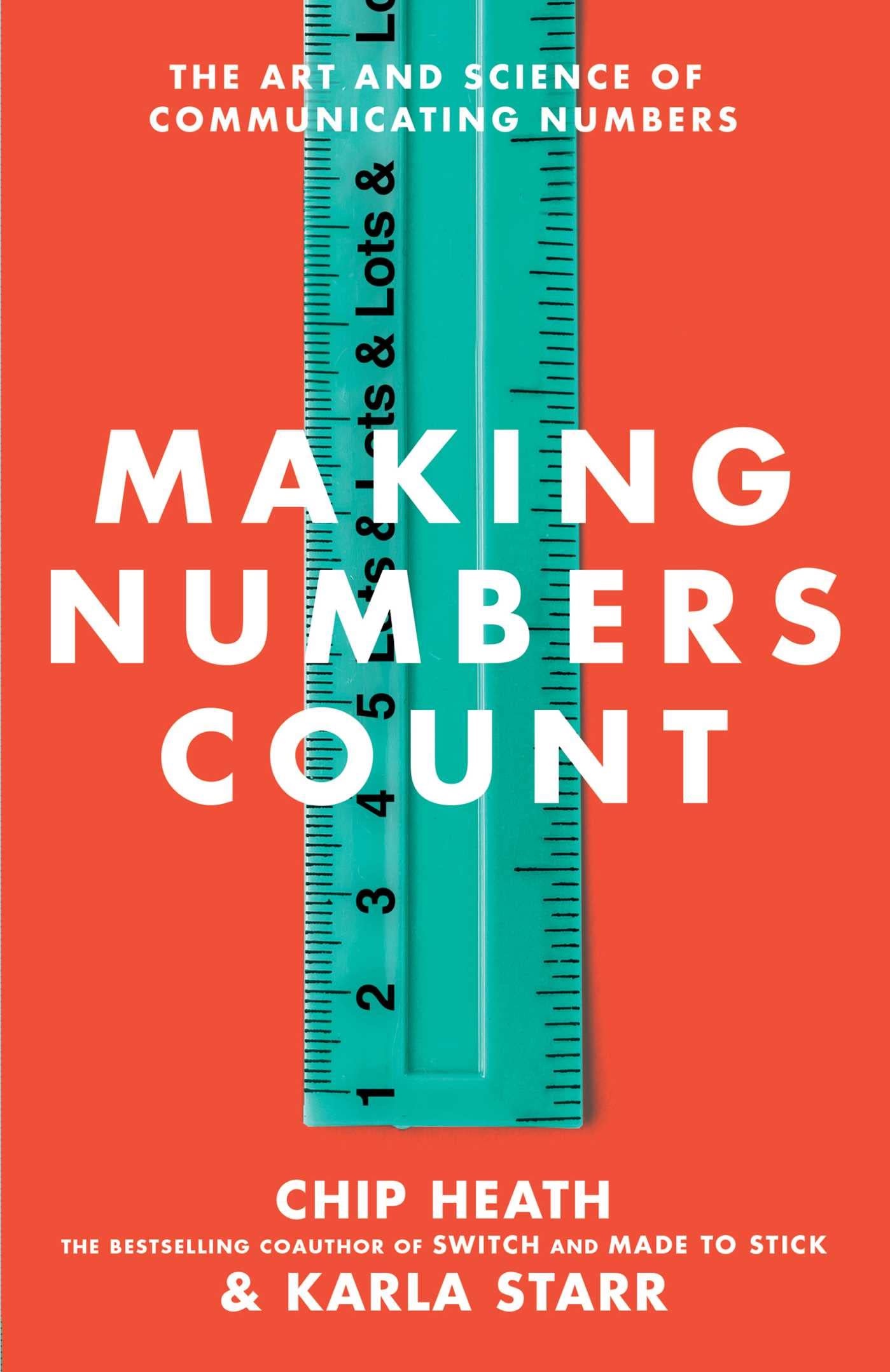
Making Numbers Count: The Art and Science of Communicating Numbers by Chip Heath & Karla Starr gives specific advice on how to frame numbers in a manner that your audience and make sense of and remember them long after hearing a presentation or reading an article. If you find that you have to use numbers to persuade people, read this book and share it with your kids and coworkers.
Introduction
- We live in a world where our success depends on our ability to make numbers count. The goal of this book is to teach you how to translate numbers that lack meaning to most people into comparisons that do. For most humans, when you get past five or so all other numbers are just variations of lots. You can start by flipping through the book looking for boxes that contain a standard representation of a number and a translated version that is more understandable. There are over thirty translation techniques to choose from. If you, like most people, are not a numbers person, this book is for you.
Translate Everything, Favor User-Friendly Numbers
- If you don’t translate numbers for most people you might as well be speaking in a foreign language. Math is no one’s native language. The best translations of numbers are not numbers at all, but things you can visualize and stories you can remember. A gallon of water next to three ice cubes with water running off of them represents in order, the saltwater in the Earth’s oceans, the freshwater trapped in glaciers, and the freshwater we can drink. That image replaces four numbers.
- Try to avoid the big numbers like the points scored in a career and go with the per-game number of points. Rather than report the number of guns in the US, report the number per person. One game or one person demonstrates the power of one.
- If you want people to remember a number make sure you round when you can. It’s easier to remember 6 than 5.684. Also, use whole numbers rather than fractions, decimals, or percentages. Try 2 out of 3 rather than 2/3. Depending on your audience, you can break these rules. Baseball fans are fine with batting averages expressed to three decimal points for example.
To Help People Grasp Your Numbers, Ground Them in the Familiar, Concrete, and Human Scale
- A look at history shows us that all cultures use familiar things like the human body for measuring units. Your arms spread is a fathom. From your fingertips to your elbow is a cubit. One thousand steps is a mile. Use things in your environment that your audience knows well. A grape-sized tumor works better than a 3 cm tumor. While you might have to use multipliers sometimes, Pakistan = two Californias for example, smaller multiplies are better and the best multiplier is one.
- Pay attention to your geographic location and culture when selecting areas and items. Above all translate from abstract concepts to concrete objects. This will make your figures feel real. Infographics may be nice, but the brain is a pretty good graphic processor if given the right raw material. There are many examples here. A favorite is a model for our solar system and the nearest star, which are compared to two quarters lying on opposite goal lines.
- Another trick is to convert one type of unit into another. Time, for example, can be converted into money using a worker’s annual salary. Calories can be converted into distances you walk to burn them off. This doesn’t always work as a trillion one-dollar bills makes a 67-mile stack, a distance that few can quickly relate to.
- Always strive to translate numbers to a human scale. An example of shrinking turns the Earth into a basketball on the baseline and the moon into a baseball on the three-point line. The two-degree reentry window for a spaceship is now the thickness of a piece of paper. An example of magnification can be used to compare the speed of sound and the speed of light. If light from a new year’s fireworks display takes one second to reach you, the sound won’t arrive until January 10th.
DrDougGreen.com If you like the summary, buy the book
Pages: 1 2





